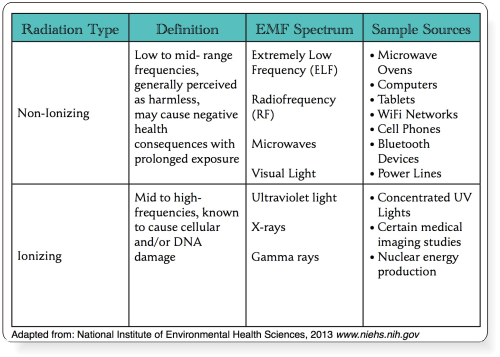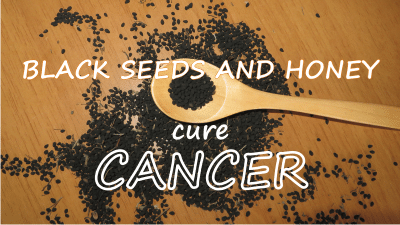People say X-Rays will give us cancer in 20 years. What protects us from radiation? From X-rays? Or from phone radiations? Are all these really that dangerous?
My child was ill last month. He caught one microbe from kindergarten and than got pnemonia and complications and needed surgery. In one week he had them all, even if he had already started the IV antibiotic treatment.
Now, to have a clear understanding of the different stages of the disease, the medics needed a CT (computer tomography) and 4 X-Ray examinations. I thought it was way too much. I still do.
Am I an overprotective mother? Do I tend to exaggerate things when my son is concerned? Do I worry too much? Yes, of course. To all of them.
When you are bombed from all the sides with all sorts of info telling you radiation is BAD for your health, how can anyone not get paranoid?
I asked myself: what are we doing here? Cure him from pneumonia and get him cancer in 20 years?
I researched a lot trying to understand what is radiation and if there really is a need to worry. If X-Rays lead to cancer on a long run, if phone radiation or microwave radiation are indeed bad for our health, if all these are truths or myths.
And, of course, how can the products of the hive be of help here.
What is radiation?
Here is the definition: “the emission of energy as electromagnetic waves or as moving subatomic particles, especially high-energy particles which cause ionization.” On a common language: It’s energy travelling. It gets out from a source and travels through space. And because we cannot see it, we fear it. But in fact, energy is everywhere around us. Radiation is everywhere. We get radiations in low doses from space, from air, and from the earth and rocks. The beautiful sunshine is radiation, too. It delivers light, heat and suntans.
The thing is, that the exposure to all of these needs to be controlled, otherwise it would lead to serious health problems.
Though not all radiation is bad, of course. There is non-harmful radiation and harmful radiation.
The non-harmful radiation
The non-harmuful radiation is known as non-ionizing radiation.
Ionizing refers to radiation that travels through matter (our flesh) and carries enough energy to remove an electron from an atom or molecule. This causes the atom to become charged or ionized.
The ionizing radiation can occur in two forms: waves or particles.
The non-ionizing radiation is that radiation that causes only an excitation. It occurs when the radiation excites the motion of the atoms or molecules, or excites an electron from an occupied orbital into an empty, higher-energy orbital. The energy is not sufficient to cause ionization. So, the electron is moved. Not removed.
Types of non-ionizing radiation (non-harmful radiation – if not overexposed): electric and magnetic fields, radio waves, microwaves, infrared, ultraviolet, and visible radiation. Overexposing to these radiations can also trigger health issues, yet, it takes a great deal of non-ionizing radiation to reach dangerous levels.
Examples of sources producing Harmless / Non – Ionizing radiation:
• SELF (sub extremely low frequency) sources: earth and subways
• ELF (extremely low frequency) sources: AC power (e.g.: electrical poles)
• VLF (very low frequency) sources: CRT monitors
• Radio frequency sources: mobile AF, FM, TV, cell phones (!), computers, shortwave, cordless phones
• Microwaves: microwave ovens and satellites, PCS phones, some mobile/cell phones, some cordless phones, millimeter waves, airport millimeter scanners, motion detectors, long-distance telecommunications, radar, Wi-Fi
• Visible light source: Sunlight, fire, LEDs, light bulbs, Lasers
Radio waves have the lowest energy and are associated with the lowest temperatures. Radio wavelengths are found everywhere: in the background radiation of the universe, in interstellar clouds, and in the cool remnants of supernova explosions. Radio stations use radio wavelengths of electromagnetic radiation to send signals that our radios then translate into sound.
The harmful radiation:
Ionizing radiation is given by enough energy which ionizes (or removes) electrons from an atom, when passing through matter. It is represented by the high frequency portion of the electromagnetic spectrum, which includes X rays and gamma rays.
The ionizing radiation can occur in two forms:
– waves: Electromagnetic radiation, in which energy is carried by oscillating electrical and magnetic fields traveling through space at the speed of light.
There are two types of electromagnetic waves that can ionize atoms: X-rays and gamma-rays, and sometimes they have the same energy. Energy is carried by oscillating electrical and magnetic fields traveling through space at the speed of light.
Ultraviolet (UV) radiation is electromagnetic radiation, with wavelengths between 100 and 400 nm. Small amounts of UV radiation are essential for the production of vitamin D in humans, but exposure to large doses may have short- and long-term adverse effects on the skin, the eyes and the immune system.
Gamma and X rays are indirectly ionizing radiation. Some scientists consider them as a 3rd type of ionizing radiation. These radiations are indirectly ionizing because they are electrically neutral (as are all electromagnetic radiations) and do not interact with atomic electrons through coulombic forces.
X-rays range in wavelength from 0.01 – 10 nm (about the size of an atom). They are generated, for example, by super-heated gas from exploding stars and quasars, where temperatures are near a million to ten million degrees.
Gamma rays have the shortest wavelengths, with the highest frequency and most energetic region of the electromagnetic spectrum. Gamma rays can result from nuclear reactions and from processes taking place in objects such as pulsars, quasars, and black holes.
A dose of only 300 joules of x-ray is fatal for the average human, even though this radiation raises the temperature of the body by only 0.001C.
– particles: The particulate radiation is a specific form of ionizing radiation. It consists of atomic or subatomic particles (electrons, protons, etc.) which carry energy in the form of kinetic energy or mass in motion.
Particle radiation is even more dangerous than Gamma and X rays; a dose equivalent to only 15 joules is fatal for the average human.
According to World Nuclear Association and Bodner Reasearch Web, we get a lot of radiation every single second, no matter where we are or what we do. The percentage is quite surprising as they show different figures.The medical X-Rays percentage showed by the World nuclear Radiation is smaller than the one showed in Bodner Research. What will the average person believe? Probably the first site listed by Google, whichever this is. But the truth is, we don’t know for sure.

X-Rays are currently used for medical and industrial purposes such as Radio Therapy
The average dose from medical x-rays has decreased in recent years because of advances in the sensitivity of the photographic film used for x-rays.
Children are especially vulnerable to environmental threats and have a longer life-span to develop long-term radiation-induced health effects like cancer.
How are X-Rays used?
In radiography also known as X-Ray examination, and computer tomography. As means of detecting and diagnosting certain conditions. And they are used to destroys cancer cells (though they are not that precise and in the process destroys the healthy cells, too), known as radio therapy.
How dangerous are they?
There are safety limits established for exposure to electromagnetic radiation, which are continually researched with the developing technology. National and international authorities establish them. These limits are enforced by appointed Government bodies to ensure that our everyday lives are not affected by over exposure to these limits. Electromagnetic Radiation limits will vary depending on the type of EMR and contain large safety margins to ensure that we are protected.
Here is the Radiation in Daily-life, according to Japan National Tourism Organization.

In the medical field, the quantity of X-Ray radiation depends on the part of the body that is radiated. I didn’t know that, but it does make sense if we think a little. Their composition is different, it’s one think to look through a bone and another to look through the heart.
Radiation is now expressed in Sievert, usualli in (milisieverd) mSv, but also in microsievert (μSv).
Chest X-Ray examination: 50 μSv per examination
Gastrointestinal X-Ray examination: 600 μSv per examination
Received by the lungs during a chest X-Ray: 10 – 150 μSv per examination
Screening mammogram: 700 μSv per examination
Dose from a typical set of full-body computed tomography (CT) scans: 7000 μSv
! Children have higher radiation sensitivity.
The above doses are based on average-sized adult averages and pediatric risk may be inaccurate.
Doses given to pediatric patients will vary significantly from those given to adults.
If used for medical purposes, the dose is way higher. Eg. If used to destroy the bone marrow in preparation for a marrow transplant (given over several days) the X-Ray radiation would be of 10,000,000 μSv.
What is the lethal dose of X-Rays?
The approximate lethal dose if no treatment is implied and it is given to the entire body in a short period is of 4,500,000 μSv. Well, this is a low dose, in my opinion.
Can we get cancer from X-Rays?
Scientists say that if X-Ray radiation of 100,000 μSv is delivered in a single dose, the increased risk of developing cancer raises by 1%.
BUT, before starting to worry, let’s remember that the statistics are averages and do not really predict what is going to happen to you, because there are too much factors involved. There is not only radiation exposure, but also individual risk factors including lifestyle (smoking, diet, exercise, etc) or family history (genetics).
If we are still interested in statistics, they say the average lifetime risk of dying from cancer is 25% (1 in 4) and that women are at risk of developing an invasive cancer in 37.5% (1 in 3) and men in 44.9% (1 in 2) regardless of imaging history.
There is no conclusive evidence that radiation causes cancer, yet large population studies have shown a slight increase in cancer, even from small amounts of radiation.
“The estimated risk for developing cancer is variable, but for every 1000 children undergoing a single CT scan of the abdomen there will be 1 cancer caused by CT (risk of 1 in 1,000). This needs to be interpreted against the risk of developing cancer over one’s lifetime. For those same 1,000 children, 200 will eventually develop cancer regardless of exposure to medical radiation (risk of 1 in 5). So the additional risk is small, but the best available research indicates that there is in fact some risk.” (The Alliance for Radiation in Pediatric Imaging)
Is the brain affected when we are done an X-Ray to our teeth?
The amount of radiotion received by the brain during a set of dental x rays is of 5 μSv.
 See the picture estimating average annual radiation exposure from various sources (in millisieverts) of an inhabitant of the United States (total = 5.86 mSv).
See the picture estimating average annual radiation exposure from various sources (in millisieverts) of an inhabitant of the United States (total = 5.86 mSv).
Individual exposures, especially to radon and medical sources, vary widely from these average values. The use of medical imaging in the United States has increased greatly in recent years. As for radon, only the lungs are exposed as the alpha particles emitted by radon cannot penetrate other tissues. (Data from the National Council on Radiation Protection and Measurements, Bethesda, MD.)
_______________________

There are not many books on the market, in a common non-scientific language, I did found one book that kept my attention. It’s a book on how to survive a nuclear attack. I know many people are asking themselves if we have any chances. Aparantely we have and this book teaches us what to do in advance.
The Woman Who Knew Too Much: Alice Stewart and the Secrets of Radiation
If you manage to find this book, I do recommend it. Amazon is out-of stock at the moment, but keep checking it, you never know. Or maybe you can find it somewhere else.
It’s a book talking about Alice Stewart, the woman who began the research that led to her discovery that fetal X-Rays double a child’s risk of developing cancer and then showed that the U.S. nuclear weapons industry is about twenty times more dangerous than safety regulations permit.
__________________________
Do you take regular X-Ray examination?
If you are taking regular examination and want to know what’s the risk of getting cancer, here is a good place to check it: Risk Calculator for Recurring Studies.
What’s the conclusion about my child’s safety now?
Science needs those dangerous examinations to be able to treat our children. Without them we may lose them immediately. With them we may lose them after 10 to 20 years. The answer is obvious.
Besides, life is so surprising, all the time and not only in a good way. I may just as well prevent him from getting irradiated from a CT, only to die 3 days after in a car crash.
The irradiation was done. From now on I will do whatever possible to ensure my child has a beautiful life ahead. And that he would be smiling 90% of the day. At least. 🙂
If you want to read more about what an X-Ray examination means to your child, The Alliance for Radiation in Pediatric Imaging offers a free pdf article, that you can download from here: What Parents Should Know about Medical Radiation Safety.
Can we prevent the bad effects of radiation on our body?
Yes. Propolis is one natural product that helps us with this. In 2010, Orsolic reviewed the anti-radiation effect of propolis. Because propolis has such a powerful antioxidant activity, it also has a powerful effect to counteract radiation, as tested in tumor cells or animals. Read more in the article: Propolis protects liver, has anti-radiation effect, boosts immunity and has anti-inflamatory activity. It protects us from the radiation we get each day from everything around us. In the next article I will continue the subject.
If you know you need to take regular X-Rays examination, then there are natural products that can help protect you against the damage.
There have been studies, done in vitro and in vivo, indicating that there are several plants that protect against radiation-induced lethality, lipid peroxidation and DNA damage:
Gingko biloba,
Centella asiatica,
Hippophae rhamnoides
Ocimum sanctum
Panax ginseng
Podophyllum hexandrum
Amaranthus paniculatus
Emblica officinalis
Phyllanthus amarus
Piper longum
Tinospora cordifoila
Mentha arvensis
Mentha piperita
Syzygium cumini
Zingiber officinale
Ageratum conyzoides
Aegle marmelos
Aphanamixis polystachya
Please see the entire article Radioprotective Potential of Plants and Herbs against the Effects of Ionizing Radiation, by Ganesh C. Jagetia, published in March 2007.
Something we can do after the exposure was done?
Apparently yes. Spirulina it is said to reverse the side-effects of radiation. Read more here: 5 Grams Daily of Spirulina REVERSED Severe Radiation Poisoning in Chernobyl Children…
And there are many others. And I will write about them in another article. Stay tuned!
Conclusion:
- Radiation is permanently present throughout the environment, in the air, water, food, soil and in all living organisms. Each person is exposed, on average, to 2.4 mSv (2400 μSv)per year of ionizing radiation from natural sources, and the amount defers to different places in Earth.
- CT is much more dangerous than X-Ray. Much more. A chest CT has 7000 μSv and a chest X-Ray has 50 μSv.
- There is no conclusive evidence that radiation causes cancer, but large population studies have shown a slight increase in cancer even from small amounts of radiation.
- We can prevent the bad side effects with some natural products, and we can combat them after the radiation took place. Don’t expect miracles, but at least we have the conviction we ARE doing something. Not only complain.
|
|
References:
http://healthphysics.georgetown.edu/HP_FAQ.html
http://hubblesite.org/reference_desk/faq/answer.php.id=70&cat=light
http://www.who.int/ionizing_radiation/about/med_exposure/en/
How Emotions Affect Your Mind-Body-Soul Connection
http://waveformglobal.com.au/
https://www.jnto.go.jp/eq/eng/04_recovery.htm
http://www.imagegently.org/FAQs-More#20551724-ct
http://users.rcn.com/jkimball.ma.ultranet/BiologyPages/R/Radiation.html
http://www.world-nuclear.org/Nuclear-Basics/What-is-radiation-/
http://www.fda.gov/Radiation-EmittingProducts/RadiationEmittingProductsandProcedures/MedicalImaging/MedicalX-Rays/ucm115329.htm
http://chemed.chem.purdue.edu/genchem/topicreview/bp/ch23/radiation.php
Cancer Ribbon picture source scottchan via freedigitalphotos.net







